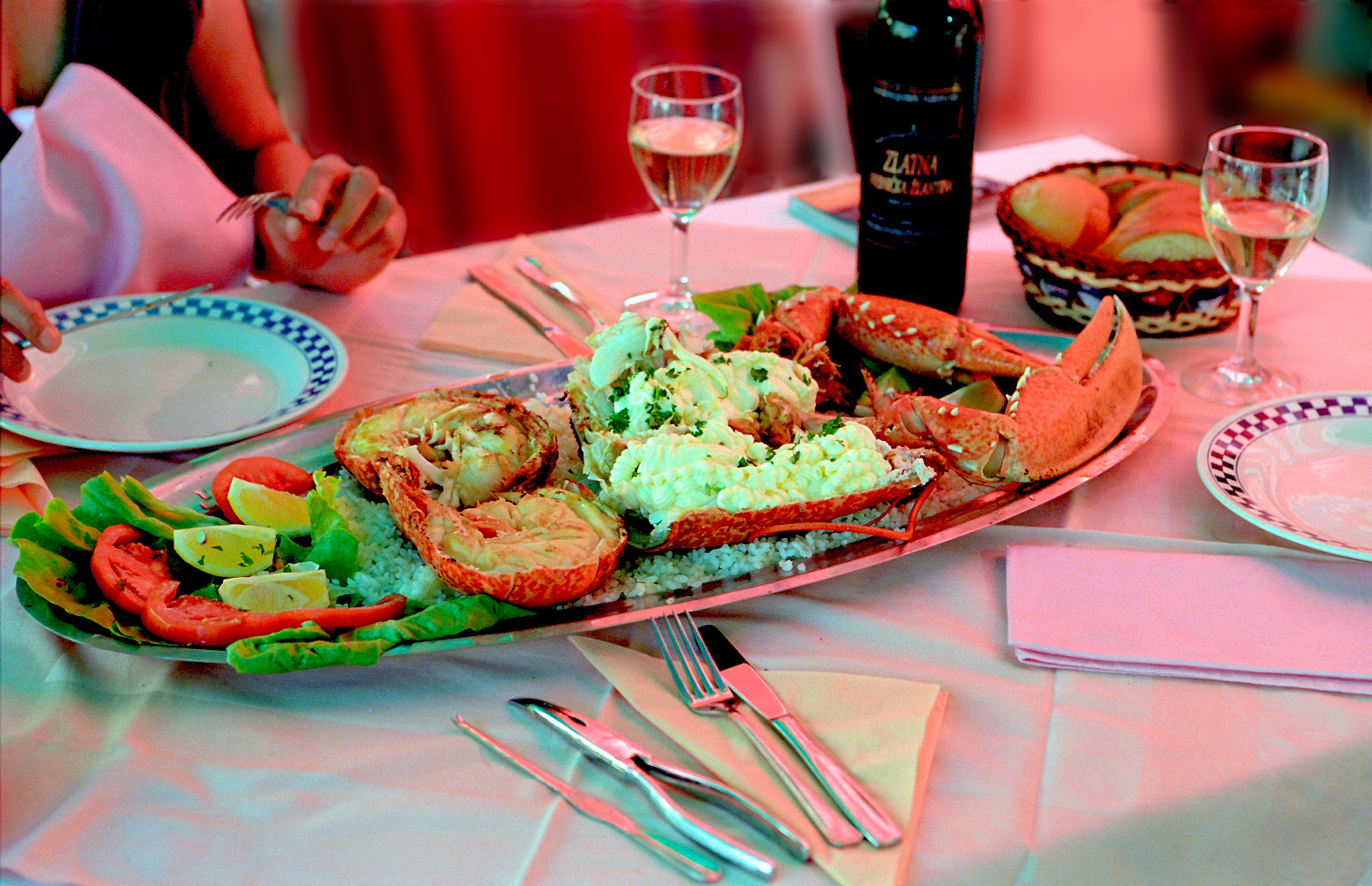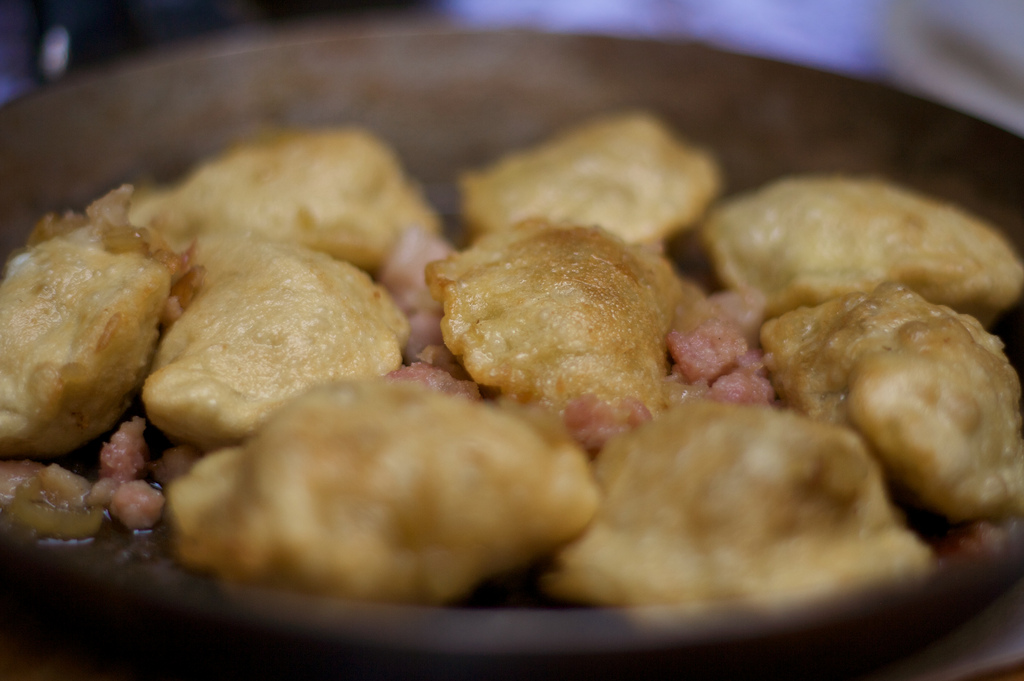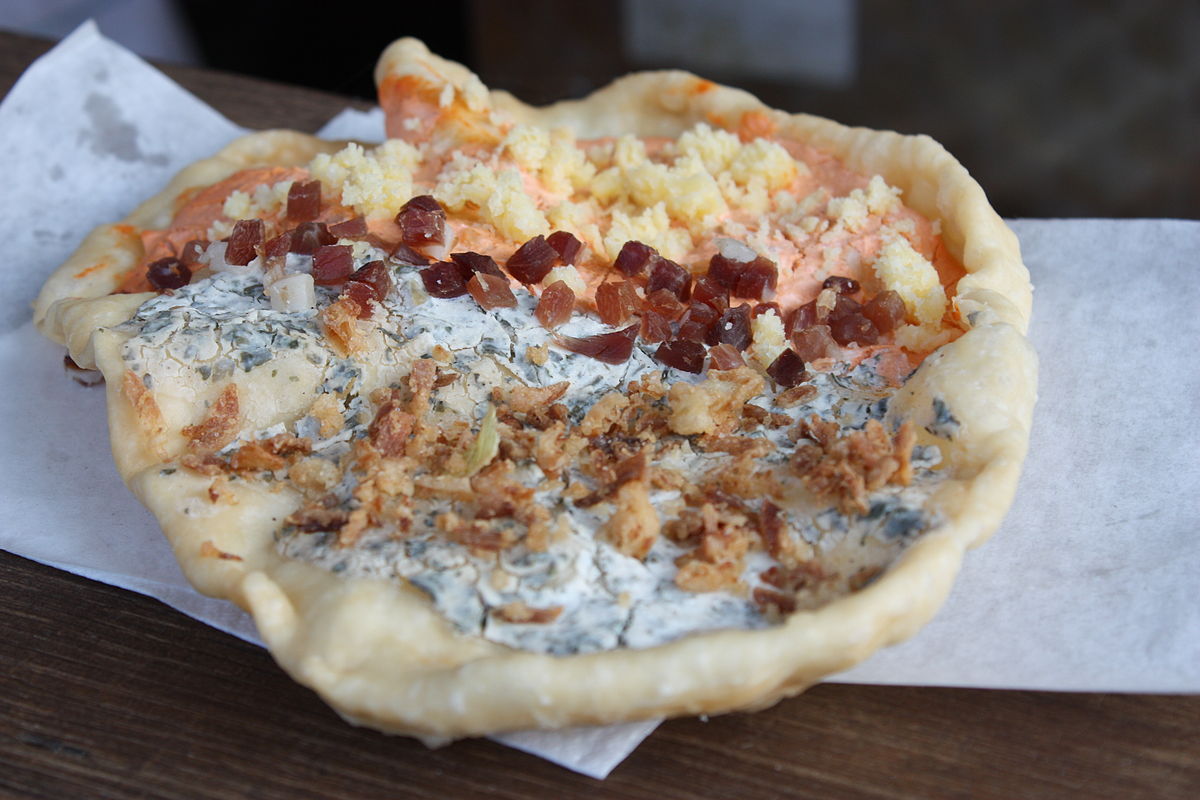A Daring Guide To Eating Like A Local In Eastern Europe

Contiki Australia - www.contiki.com
Hayley follows her nose for food and travel. She's explored…
Southern Europe is often held as the biggest culinary getaway to the world: France, Greece, Spain and Italy. For connoisseurs, the Mediterranean platter is broad as it is tasty. You’ll savour every bite of your Parisian pastries, dig into a real-deal bratwurst and reach near-religious highs with cheeses that have a longer personal history than most Australian cities.
But what then? Once you’ve bingo-carded your way around gourmet Southern Europe, where to? This is where things get really interesting; it’s where you put the juicy part of travel – chasing genuinely new experiences – where your mouth is. Tack on a new town and head eastwards to the character-filled culinary curio of Eastern Europe. From Russia to Romania, there are incredible plates to explore – some a little more appetising than others, but all served with big-hearted hospitality, and a push for a second serving.
This area is a thick culinary stew of historical influences and survival tactics. There’s such a crossover of regional cuisines that sometimes it’s hard to say which dish originated in which country, but every one of them was made to stick to your bones, to nourish and comfort. People here use their land for the most plentiful results: timber offcuts from the forest provide the means for smoking game meats and poultry; home gardens produce abundant fruit for folding into ingeniously simple desserts; and a know-how of pickling and preserving ensures crops of family-grown veggies are kept crunchy and tart.
When I’m travelling, I like to switch off from UrbanSpoon and let my eyes and nose guide me. Instinct over internet, if you will. Once you hit this region, impulse always pulls you to the small, dark cafes rather than the main streets or food carts. It’s in the shadows with the locals where the most authentic and pungent dishes await.

Russia
Touchdown in Moscow and sink into the majesty and mayhem of the country’s fascinating urbanscape and Soviet spirit. This is the other city that never sleeps. There’s bars and cafes for all tastes and budgets, encouraging visitors to chatter into the early hours of the morning while watching the sun rise over the Kremlin.
Historically, Russians have had to be thrifty with their food. A tumultuous past with periods of rationing and famine has seen pickling and preserving become a staple food source. Expect vinegary and crunchy. Even today, meal flexibility is a necessity, with the Russian government frequently banning food imports based on who their allies and enemies are. A ban was recently placed on Turkish fruits and vegetables, causing Russian families to adapt quickly to a shortage of tomatoes, citrus fruit and white meat.
To really experience the Russian expertise for pickled oddities, seek out the psychedelically named Herring Under Fur Coat Salad (Селедка под шубой). What looks like a glorious cake is actually a layered surprise of salted preserved herring, shredded potato, carrot and boiled eggs, topped with a moist purple cloak of pickled beetroot mayonnaise.

This is as traditional as it gets, with the dish often paraded at family get-togethers and on New Year’s Eve. Wash it down with a chilled vodka or the lighter alcoholic beverage Kvass, which is a honey, berry and fermented bread brew.
Not for the faint-hearted: Salo: raw pig fat that’s usually aged in a dark, cold place. Think ‘bacon’ when you eat it and it actually becomes pretty tasty.
Czech Republic
I once arrived in Prague in a bit of a state. I’d missed my connecting train in the dead of the night and finally emerged foggy and overtired at the central station hlavní nádraží – a smoky art nouveau building complete with signature Czech gargoyles.
As I traipsed the platforms deciphering directions to my hostel, I passed ad-hoc market stands selling huge knives, tourist tidbits and trays of sweet rolls tightly clad in plastic wrap. The price was right, so I grabbed a tray and succumbed to a restorative snack.
I didn’t know it but these sweet rolls, or makový závin, are a Czech breakfast signature. Buttery yeasty breads filled with bittersweet poppy seeds – a total danger zone for toothy smiles. Kolace is another variation on this little bun, filled with cherries, custard or walnuts instead. Stash some in your pocket for your trek through Prague’s cobblestone laneways, heart-stirring strolls over Charles Bridge or misty mountain lookouts from the city’s castles and monastery.

Not For The I-Quit-Sugar Crowd: If your sweet tooth is up for it, settle into a Prague cafe and ask for (OK, point at it on a menu) ovocné knedlíky. These parcels of joy are sweet dumplings stuffed with local cherries and smothered in icing sugar. They’re a dreamy change from the area’s meat-heavy mains and stout beers, which you’ll no doubt be enjoying too.
Serbia
Belgrade is the cosmopolitan centre of the Balkans; a lively joint positioned where the Danube and Sava rivers meet. Cafes rule the streets, traditional brass music pulses through the air, and visitors are served huge meals with a hearty attitude.
Sarma is a treasured meal served for lunch or dinner. It involves ground beef, bacon pieces and sometimes rice, rolled into fermented cabbage leaves and baked. The cabbage leaves can be a little bitter depending on how long they’ve fermented for and to prepare them, the cabbage is placed in vats of salted, spiced water and left to age. Tradition says if you drink the powerfully odorous water, you’ll be strong and healthy. I’m not so sure.
Side dishes are a dollop of sour cream (pavlaka), a roasted pepper puree (ajvar) or minced garlic. Sarma leaves you full and satisfied, and it’s kind of neat to get a hit of meat, grains and veggies all in one bite.

Be Alert, But Not Alarmed: If the taste of the sarma is a bit too sharp, you’re going to be encouraged to swill it down with rakija. This syrupy brandy is infused with either fruit, medicinal herbs or honey, depending on which region it was made in. A word of warning: sip it slowly. The alcohol content starts at 40 percent and climbs steadily. Raise your glass and shout “Živeli!” (cheers!) for a round of applause from your new buddies.
Croatia
Sitting snugly alongside Serbia is heavenly Croatia. Although they share many Hungarian, Serbian and Italian influenced dishes, it’s their incredible Adriatic coastline (with over 1000 islands), that provides unique food highlights. Croatia’s geographical position and climate is spot on for wineries and truffles too, so if you’re a food lover looking for primo bites, then get on over.

Dubrovnik is the gem of the coast. 16th century castles balance atop limestone cliffs that extend downwards to the blue waters below. You’ll find there’s a Mediterranean feel to their fishy dishes, but Croatians add their twist with aromatic Dalmatian Coast olive oil and grills stoked with wood from the region. Stuffed squids, baked octopus, black risotto with clams, flame grilled shellfish and sea spider salad are all standard menu items.
For The Brave: Gulas od puha. I’m not going to lie to you, this is mouse. ‘Puh’ is the Croatian word for dormouse and every October, cities throughout Croatia host dormouse festivals to catch, cook, and eat dormice. The most popular dish is dormouse goulash served with gnocchi, polenta, or pasta.
Romania
Welcome to the home of Transylvania! As you’d expect, Romania is a land of mysterious, quirky beauty and a climate best known for their long, cold winters. Snow falls in mountainous regions from December right through to mid-March. It comes as no surprise then that this culture has embraced steaming hot soups, a traditional feed savoured throughout the day.
Sour soup, bean soup, black sea fish soup – there’s a variety to suit every appetite, with characteristics of the region’s Middle Eastern and Baltic influences peppering each dish. To bulk up the meal, most soups are served with small plates of sides like hot pickles, garlic puree and mămăligă, a cornmeal porridge resembling polenta.
If you’ve had a late night in Bucharest, the country’s unusual and energetic capital, grab a bowl of tripe soup for a pick-me-up. Made with either a blend of sour cream or vinegar, calves’ stomachs are cut into strips and boiled with root vegetables. There’re a few haunts around the city serving locals from as early as 4am. The greasy nature of the soup is said to heal the adverse effects of too much partying.
Smash Some Papanash: It’s fun to say and even more fun to eat. This is a calorie bomb of fried dough stuffed with sweetened curd cheese, jam and cream. Once you start you can’t stop. It also makes for a nice reward if you’ve braved the tripe soup.

Poland
Poland’s capital Warsaw is an easy detour from bordering neighbour Berlin. The city has taken some of the underground cool of East Germany and blended it with their own diverse architecture and natural attractions, like the Carpathian Mountains and Baltic Sea.
One of Poland’s most loved national dishes is the pierogi. You can’t avoid these steamed dumpling delights filled to the brim with tasty morsels. Lucky vegetarians can tuck into this dish (somewhat of a rarity in Eastern Europe), as most are filled with a traditional combination of cheese, sauerkraut, potatoes, mushroom or spinach. The fillings are limitless though, and meat-lovers won’t be disappointed.
If your pierogi cravings require a twist, choose the type that can be lightly fried or served in a bowl of red borscht (known as uszka). All the dumpling variations are incredibly cheap and found right around the country.

Don’t (or do) Get Cold Feet: Order some nozki. The literal translation is “cold feet” and that’s exactly what’s served. Pigs trotters are infused with herbs and spices until they are tender and fall off the bone. The jellied meat is set in gelatin, moulded into shapes and served chilled with a retro sprig of parsley.
Belarus
Landlocked Belarus may be the heart-stone of Poland, Lithuania, Russia and Ukraine, but Belarusians are very protective of their own identity. It’s every romanticised idea you’ve ever had about Europe condensed: Minsk is a picturesque snow-globe, barely touched by litter or advertising. Instead of merging into other European identities, Belarus embraces its rich folk history and expertise in the simple life.
Belarusians have a history of being inventive cooks with impressive recipes extending back to pagan times. There’s variety and flavour in every dish, with a galaxy of spices like cumin, coriander, dill, black pepper and cloves. The diet is quite healthy compared to neighbouring standards, championing vegetables, with the humble potato the hero ingredient. They are so beloved that locals warmly refer to them as “second bread”.
A Brief History Of Potato Gut: The amount of potato dishes is quite diverse, and one you’ll see in village homes is the amusingly named potato gut. Sliced potatoes fill traditional sausage skins (intestines or guts) and are baked with bacon rashers holding them together. They’re served warm with garlic sauce, coleslaw and pickles. The dish dates back to the 14th century and each year the World Baking Guts Championship takes place on the border between Belarus and Poland, where rivals fight for the title of the best gut.

Hungary
The capital of Budapest has about 200 years of top culinary reputation to uphold. Open-air bars nestled inside crumbling ruins compete with a river-side parade of shops and clubs. The people here know how to live the good life. It’s an excellent balance of historic and hip, and it’s fast becoming the worst kept summer secret.
Hungarian culture values sitting down to eat, so expect leisurely one-pot meals cooked for hours over open fires and served at tables with wholesome, chummy attitude. The most famous dish is, of course, the goulash. This medieval stew has many variations, most made with meat and vegetables and a generous scoop of local sweet paprika. Look out for the smoked meat or spicy sausage versions to experience an added kick of flavour in every spoonful.
If it’s a short and snappy meal you’re after, grab a handheld delight in the form of “poor man’s strudel”. This pastry is flavoured with sweetened cabbage – not apples – for a thrifty dessert that still hits all the right buttons. Similarly, you can’t miss trying a langos. These cultish deep-fried flatbreads are eaten fresh and warm, doused with sour cream, grated cheese and garlic butter.

Quick Guide To Great Market Hall: Built in 1897, this sprawling market is a gourmand’s paradise. It’s set over three storeys, so you’ll need a slow pace and sizeable appetite. Go in ready to eat but not starving so you take your time. The ground floor is chocked full of fresh produce, sweets, spices and traditional delicacies like tokaji (regional wine) and caviar. Eateries are positioned on the second floor (including a long line for that langos), and the basement is where you’ll see more jars of pickled food-stuffs than you ever thought could exist.
Are you ready for a taste of Eastern Europe? Delve deep into the culinary and colourful culture with Contiki on a 13-day Eastern road trip, travelling from funky Berlin to the largest city of the Czech republic with the best beers in town – Prague. Follow Contiki on Facebook or Instagram, for the best travel inspo and start planning your next adventure!
Hayley follows her nose for food and travel. She's explored the globe far and wide, but still daydreams of Hawaii and Mexico the most. She runs Sticky Fingers Bakery and has written for Hooray, Broadsheet, The Blackmail, Daily Life and Dirty Furniture.










